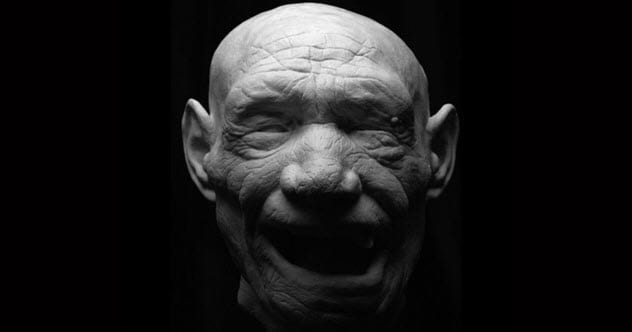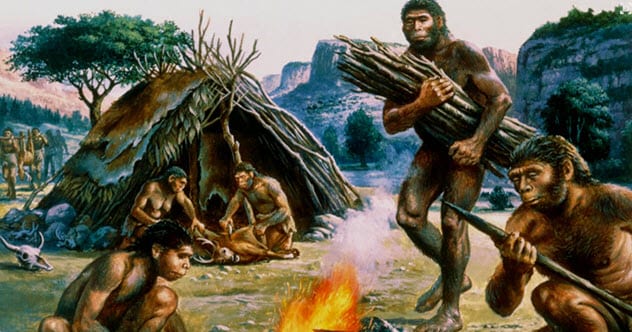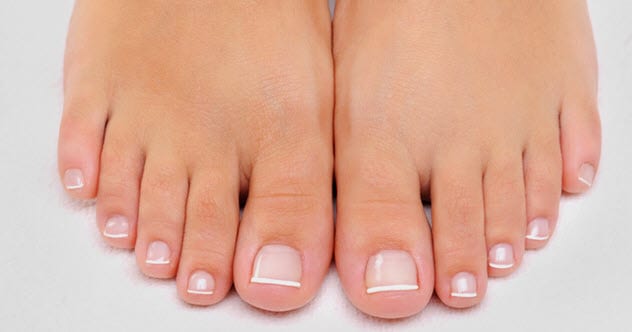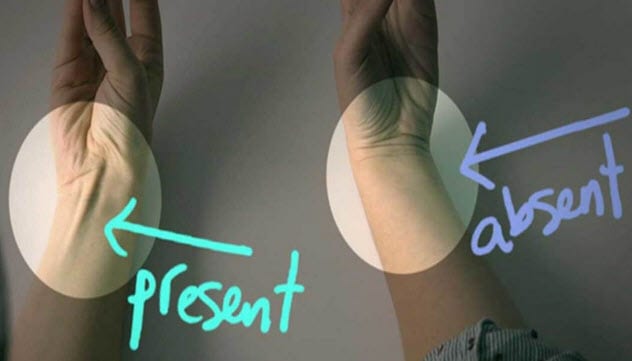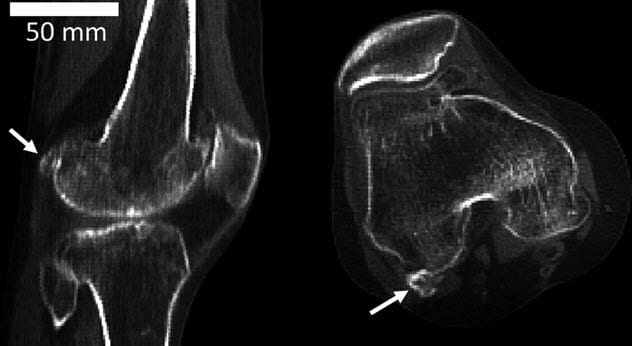In fact, modern humans can thank several ancient perks for their survival, including laughter and eyebrows. Human evolution is far from over. From changing female voices to genes that ruin drinking games, things are set to get more interesting.
10 Nails Are Really Ancient
Primates sprouted nails as far back as 58 million years ago. This provided the tree-dwelling creatures with several benefits. The main job was to better equip them to navigate trees, to which they were basically confined. Nails strengthened the fingers, allowing for a better grip, and protected the nerve endings that permitted the fingertips to feel the world. They also brought food perks. Compared to other tree animals, primates excel at harvesting fruit at the end of branches—a tricky feat that requires good maneuvering and a great grip on the narrowing foliage.[1] Humans no longer nest in trees. At one point, an ancestor decided that the land was a better deal. As the lineage evolved, people ended up in caves and eventually penthouses. Through all the physical changes, including a radical habitat shift and thousands of years, humans retained their claws. The “tree dexterity” of nails simply switched over into productive toolmaking and the infinite tasks that human hands can do today.
9 The Purpose Of Laughter
At first, laughter seems straightforward. Humans laugh when they find something funny (or pretend to). Looking back, it would appear that lives depended on how social and amiable one seemed. Nobody would have invited the caveman with the killer stare and argumentative nature. Nope. In winter, they probably left him outside the cave and watched him expire. Studies have shown that laughter is a powerful social glue. Back in the day, the habit probably evolved as a verbal way to cement alliances and negate violence. While aggression was always a primary human trait, one might be less inclined to strangle the guy who laughed at your jokes during the last meeting at Stonehenge. Interestingly, while fake laughter appears to lower the same barriers as a genuine cackle, it might not fool outsiders. During a 2016 study, volunteers from 24 different societies accurately detected pairs of strangers or two friends just by listening to one of them laugh.[2]
8 Unexpected Female Dating Voice
In 2018, researchers herded 30 speed daters together. The women stayed at the tables, while the guys rotated every six minutes. Each had to mark a card showing whether they fancied the other person or not. When researchers listened to the recorded conversations afterward, it became clear that both genders lowered their tones with somebody they liked. This clashed with previous studies showing that men were attracted to women with higher voices because they sounded younger and more feminine. The surprising mutual drop in tone has not been solved, although researchers agree that it could be an evolutionary tool to snag a mate. Some suggest that the women used a more dominant pitch in the competitive environment of speed dating. However, others feel that a quieter way of talking is a lot more intimate. When dating happens in a room full of people, a woman might drop her voice merely for privacy. Interestingly, voice recordings of women in 1945 compared to ones taken during the 1990s showed that the female tone has lowered. This could be because women are trying to communicate maturity, competence, and dominance in a more equal opportunity world.[3]
7 The Human Fur Mystery
Compared to other animals, humans are fairly bald. Fur kept our earliest ancestors warm, protected their skin, and provided camouflage. Something pressured evolution to erase it. The prevailing theory suggests that it was the ancestral decision to abandon trees for living in the open savannas. This new environment would have been a lot hotter. A body covered in hair would have made living and hunting in the sun’s heat impossible.[4] It is also thought that human sweat glands boomed when hair turned sparse. In fact, modern humans are the sweatiest primates on the planet. Around five million glands produce up to 12 liters (3 gal) of sweat daily. This amount would have kept humans cool in the savannas but only if they were hairless. The neat-sounding theory has many holes. It cannot be proven that hair loss and the sweat gland explosion occurred at the same time. Researchers are also uncertain how these individuals dealt with excessively cold temperatures, what genes were involved, or even when human fur vanished.
6 Slow Big Toe
In 2018, a study identified the big toe as one of the last foot bones to evolve after humans crossed over from tree-swinging to ground-dwelling ancestors. To walk upright took a major overhaul of the feet. The big toe was instrumental in this change because it allows traction during walking. Despite its importance, the largest toe stuck to its primate origins the longest. This was probably because it was the most difficult to change. In the beginning, the toe was almost like a finger, grasping branches and working as a tool. This highly useful feature had to turn rigid to ensure effective locomotion on two legs. For this reason, the change occurred gradually over millions of years.[5] The study’s findings were surprising in a way. The big toe remained opposable for much longer than thought, proving that it did not truly interfere with the ability to walk efficiently.
5 Why Men Have Nipples
Male mammals cannot feed their young, and yet they have the tools to nurse. Some men even lactate, although this is usually due to a hormonal problem. Guy nipples are not an evolutionary quirk. They are the result of a biological process that prevented evolution from erasing a useless trait. A mammal embryo has the potential to become either sex. When the time comes to swing one way or the other, the embryo’s chromosome set decides the gender. If the male XY set is present, a gene called SRY activates and ushers in everything the embryo needs to develop into a boy. However, there is another process that happens before the male genetic switch can flip. In mammals, the mammary glands begin to develop extremely early and these glands do not care for any old chromosome set. They set the stage for breast tissue and nipples, and there is nothing that SRY or evolution can do about it.[6]
4 A Useless Tendon
There are times when evolution cannot be bothered to sweep up the leftovers. One of the most useless things that nature left in the human body is the palmaris longus tendon. It is quite a prominent feature in the wrist. Most people can see it when they touch their thumb and pinkie together and slightly tilt the hand toward themselves. A raised line will appear in the middle of the wrist. If not, they are among the 10–15 percent of people who were born without it. The tendon connects to the palmaris longus muscle but does not make it stronger. The only time it serves a purpose is when surgeons remove and use it elsewhere in the body during plastic and reconstructive surgery.[7] It remains unclear why humans have this useless tendon. A tentative guess considers it a relic from a time when the forearms were used as much as the legs to move around. Why? Modern mammals with the most developed palmaris longus tendon do just that—including monkeys and lemurs.
3 Eyebrows Saved The Species
Eyebrows serve one obvious purpose today. They act as a protective barrier for the eyes by stopping rolling fluids and debris. But in 2018, researchers made a surprising case: Without eyebrows, humans might have gone extinct like the Neanderthals. Sounds extreme, but the proof could be in the brow bone. Neanderthals and other ancient hominids had prominent bony ridges above the eyes, very much like some primates today. Studies showed that this ridge, which is absent in humans, had no real purpose other than to look fierce. Looking fierce in a primitive world is not always the wisest move. Tempers flare, and clubs start swinging. Worse, this ridge prevented Neanderthals from maneuvering their eyebrows to look friendlier. That was the difference that might have saved the human race. Our eyebrows convey subtle signals of compassion, sympathy, and friendliness.[8] The fossil record backs up this wacky-sounding hypothesis. The human brow ridge started to recede during a time when important social connections began between distant groups. Being able to eyebrow-signal one’s friendliness would have gained more allies than enemies—and thus more power.
2 The Returning Bone
There is something strange going on with the human kneecap. It was once accompanied by a tiny bone called the fabella. It did the same job as a modern kneecap for Old World monkeys about a zillion years ago. As humans evolved, it shrunk and eventually got lost. However, it just took a few knee operations and scans to notice that the fabella was still present in some people. In 2019, researchers threw out a wide net. They reviewed medical records from 27 countries that involved more than 21,000 knees. The results were clear. The tiny bone was coming back. The records spanned almost a century, and the earliest showed that around 17.9 percent of the population had it in 1875. Only 11.2 percent had it in 1918. However, by 2018, around 39 percent of people were estimated to possess the returning relic. Evolution is not always positive. Those with a fabella are more likely to suffer inflammation, osteoarthritis, and a variety of knee problems. The boomerang act remains unsolved, but it could have something to do with bigger, better-nourished modern humans putting more pressure on the knee.[9]
1 The Hangover Genes
One of the weirdest ways humans are still evolving concerns the alcohol dehydrogenase (ADH) gene cluster. In 2018, researchers found signs that the region was changing—which is not good news for those who like their liquor. Normally, when a person guzzles a beer or 50, the body breaks down the alcohol into toxic acetaldehyde. When this stuff accumulates, the drinker no longer feels so jolly. The face flushes, and the person experiences nausea and a rapid heartbeat. Typically, acetaldehyde is quickly metabolized into a less bothersome acetate that is easily eliminated from the body. Some individuals with East Asian and West African ancestry showed an evolved ADH cluster, which makes drinking uncomfortable really quickly. This adaptation makes it difficult to process alcohol, so such people are struck down faster with super hangovers. It is not clear how quickly the adaptation is spreading to other populations or whether the genes changed in an attempt to shield humans from drunkenness.[10] Read More: Facebook Smashwords HubPages

